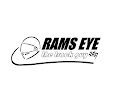Okay, this is over three weeks old new. But, as I've done in the past a few times, I simply cannot exclude some cars when they debut from my blog. This is a perfect example, the new CTS-V. For one, look at the thing. I think it looks awesome. It's aggressive but not vulgar and, besides the grille and hood vents, looks almost discrete in a dark colour like the gunmetal grey below (okay, the quad exhausts are a giveaway as well).
We haven't even got to the best part yet, the supercharged beating heart making 640 hp. 640 hp. That is a lot more than the last generation's 556 hp and it actually needs less to be as quick. I was expecting Cadillac to give it a number around 600 hp and would have been very happy with that. It would have been a nice jump of about 50 hp from the last generation while having a better and lighter chassis. You can't complain about that. But no, they gave it 640 hp. For those who are bored by numbers, skip to the next paragraph. This car is around 200 lb. LIGHTER than the last generation. Looking back a test of a 2008 CTS with the 3.6 V6 (Car and Driver weighed it at 4,032 lbs) vs a 2014 CTS test with (basically) the same 3.6 V6 (Motor Trend weighed it at 3,840 lbs), that's very nearly 200 lbs. The last generation CTS-V weighed nearly 4,300 lbs so this one should come in around 4,100 lbs. In other words, it would have needed 530 hp to be as quick but they threw another 110 supercharged hp at it and wrapped it all in a much more capable chassis.
Speaking of the chassis, there are plenty of improvements there too. Cadillac used various braces to stiffen up the chassis by 25% compared to non V models. These include:
- Strut tower-to-tower brace
- Strut tower-to-plenum brace
- V-braces for the engine compartment
- Strengthened rocker bulkhead
- Stronger rear cradle-to-rocker braces
- A unique aluminum shear panel at the front of the chassis
- Upper tie bar-to-bumper braces.
Other improvements were made in the form of stiffer wheels, bushings, springs and stabilizer (anti-roll) bars. Cadillac also revised the front suspension for better control and, as expected, the latest and greatest magneto-rheological shocks - i.e. Magnetic Ride Control in GM speak. This is the third generation which can respond 40% faster than the last generation which, according to Cadillac, can change the damping force every inch of the road at 60 mph (96 km/h). Rounding off the suspension are bigger Brembo brakes with six piston callipers up front clamping on 15.3 inch (390 mm) rotors and four pistons callipers in the back clamping on 14.3 inch (365 mm) rotors.
Outside, the body was optimizer for aerodynamics to reduce lift, improve cooling or both. A carbon fibre hood is used to save weight with air-extracting vents that help directs air flow out of the engine bay and over the car instead of under which improves cooling as well as reduce lift. The front and rear fascias have also been improved and a front splitter, rocker mouldings, and a rear spoiler are used to reduce lift. A carbon fibre package is available to kick it up a notch with more aggressive front splitter, hood vent, rear diffuser and spoiler.
I know this is bound to be phenomenal. 640 supercharged hp, lightweight (for the class), an already proven excellent chassis and Cadillac is also using an electronic limited-slip differential and Chevy did wonders with it in the Corvette Stingray. I also remember reading an early review of the C7 Corvette with the magnetic shocks and the person testing the car said that he has never driven a car on a track that was as forgiving on the rumble strips as the Corvette so we know the ride will still be great. It will have a top speed of 200 mph and will get to 60 mph in 3.7 seconds, according to Cadillac. For those who are interested in lap times, think about this. The current BMW M5 posted a lap time of 3:05.2 at VIR during Car and Driver's Lightning Lap. The E63 AMG S-Model put down 3:00.1. Meanwhile, the Camaro ZL1 was 2:57.5. This has about 70 hp more, will weigh the same or less with a much newer and better chassis and drivetrain. I would be very surprised if it weren't quicker than the ZL1. In other words, it will probably blow the competition out of the water.
I hope I can drive one when it comes out and can't wait to see a full test of it! For more information and details, visit: 2016 Cadillac CTS-V - Cadillac Media.
I hope I can drive one when it comes out and can't wait to see a full test of it! For more information and details, visit: 2016 Cadillac CTS-V - Cadillac Media.

















Thank you for the report. This pretty much sums up everything this car is on paper, and furthers my expectations. I love the styling - although I confess to not being a huge fan of the carbon fiber package rear spoiler, perhaps it will blend a bit more seamlessly in the darker colors. I cannot wait for the real world road tests to start appearing. I may have found a new grail car in the 3rd generation CTS-V. Well done!
ReplyDelete